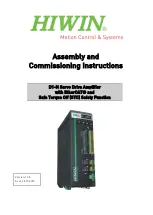
Glossary of Terms
33
Transcoding
- Converting one type of digital signal to another (i.e, from AES to SPDIF, or from ADAT to
AES).
Transformer
- An electronic component consisting of two or more coils of wire wound on a common
core of magnetically permeable material. Audio transformers operate on audible signal and are
designed to step voltages up and down and to send signal between microphones and line-level devices
such as mixing consoles, recorders, and DAWs.
Transient
- A relatively high volume pitchless sound impulse of extremely brief duration, such as a
pop. Consonants in singing and speech, and the attacks of musical instruments (particularly
percussive instruments), are examples of transients.
Transimpedance Preamplifier
- A transformerless solid-state preamplifier utilizing a transistor
configuration that employs current feedback for ultra-low distortion and the highest possible quality of
signal from input to output. The transimpedance design allows audio from 4 Hz to 150 kHz to pass
through without altering the phase relationships between fundamental frequencies and overtones.
Noise and distortion are kept to near-theoretical minimums so critical signals may be generously
amplified without degrading the quality or character of the sound source.
Word Clock
- A dedicated clock signal based on the transmitting device’s sample rate or the speed
with which sample words are sent over a digital connection. (See “Clock”)
XLR
- A standard three-pin connector used by many audio devices, with pin 1 typically connected to
the shield of the cabling, thus providing ground. Pins 2 and 3 are used to carry audio signal, normally
in a balanced (out of phase) configuration.











































